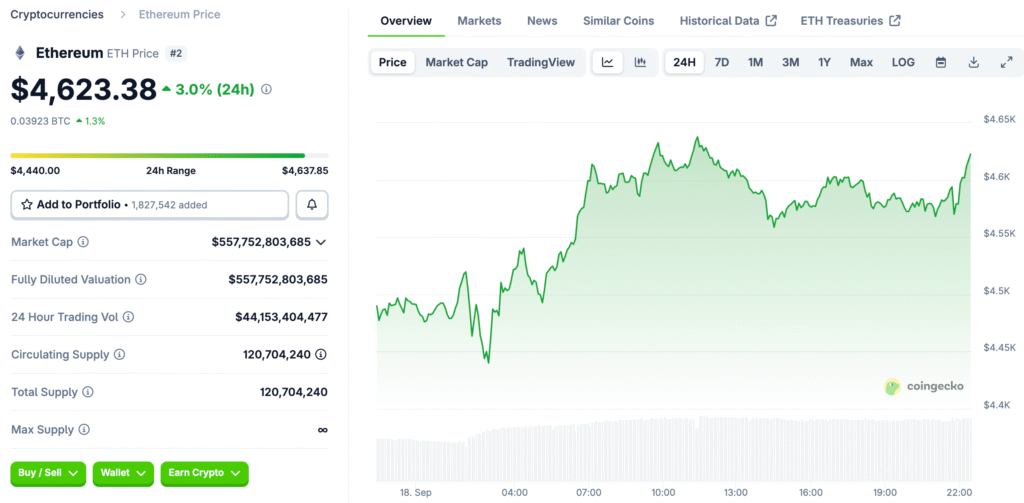Ethereum Staking Ensures Security Through Withdrawal Delays
Ethereum’s proof-of-stake design requires validators to stake ETH to get rewards and keep the network safe from outside threats. Participants can’t just leave right away; they have to wait in an exit queue. This stops sudden mass exits that could make Ethereum’s security less stable.
Some holders are upset by this delay, but it is still a safety measure. It makes sure that validator commitments stay strong even when things are changing. Ethereum protects long-term stability by enforcing structured rules. This makes proof of stake a long-lasting consensus model around the world.

Buterin Compares Staking Rules to Military Rules
Vitalik Buterin compared unstaking to soldiers leaving an army, saying that a lot of people leaving would make the group less resilient and less safe. The exit queue works like military rules to make sure that people leave in an orderly way without hurting the integrity of the operation or the stability of Ethereum’s blockchain.
This comparison stresses the idea of shared responsibility. The inconvenience of one person is worth it to keep a secure network that can support millions of users at once. Buterin pointed out that fairness and responsibility are still the most important parts of Ethereum’s proof-of-stake model for long-term staking participation.
Exit Queue Keeps Things Fair for Everyone in the Network
The queue makes it less likely that people will suddenly leave, especially whales who could cause problems during big market changes or volatility events. It also punishes validators who leave without permission or break the rules, which makes the network more reliable and accountable.
Ethereum’s system makes sure that everyone follows the same rules, which keeps things fair and protects decentralization from having too much risk in one place. This balanced approach puts safety ahead of convenience, which builds trust in institutions and long-term holders all over the world.
Recommended Article: Ethereum Unstaking Queue Hits Record High on Profit Taking
Investors Worried About Delays in Withdrawals
Some people who own ETH say that delays in withdrawals make liquidity less flexible, making it harder to get to money in case of an emergency or a sudden change in the market. This frustration shows that there is a trade-off between personal freedom and group safety in decentralized proof-of-stake systems.
Buterin said that the inconvenience is still small compared to the risks of a lot of validators leaving at once. Security must always come before short-term pain. Investors should plan their participation carefully, knowing that staking is more about protecting the system than having money available right away.
Ethereum Balances Rewards and Validator Responsibilities
Stakers earn yield on their ETH deposits, but they must agree to rules that make sure validators do their jobs well so that transactions can be processed quickly. Rewards encourage people to join in, and the exit queue keeps a balance between making money and keeping Ethereum’s decentralized security systems safe.
This structure makes people more sure of themselves. Participants understand that contributions make the network stronger and that rules keep people from acting badly or leaving the network in large numbers. Ethereum’s model shows that when you mix incentives with accountability, you can make long-lasting consensus systems in decentralized finance ecosystems.
Long-Term Vision Reinforces Proof-of-Stake Stability
The design of Ethereum puts a lot of emphasis on sustainability. Proof of stake uses less energy than proof of work, which is in line with environmental goals in many fields. Exit queues help decentralization by making it harder to cheat and making sure that validators stay the same, which builds trust among businesses and governments.
Vitalik Buterin’s explanation makes it clear how Ethereum protects itself from systemic risks while also making it more scalable over time. Safety is always the top priority in rules. These steps show that Ethereum is committed to staying at the top of blockchain innovation while also making sure that growth and security are balanced.
Ethereum’s Withdrawal Queues Prioritize Security
Withdrawal queues show that Ethereum is committed to safety, fairness, and reliability. They make sure that validators are still responsible in decentralized consensus mechanisms. Delays may be annoying for investors, but they are necessary to keep the network stable during times of high volatility.
Understanding the rules for withdrawing staked funds helps investors set realistic goals. Ethereum’s model puts security ahead of convenience, which builds global trust that will last. These protections keep Ethereum’s integrity as it grows, showing that security is still a key part of its long-term technological vision.



















